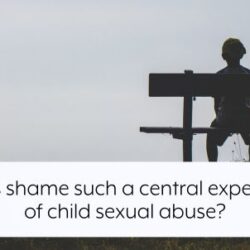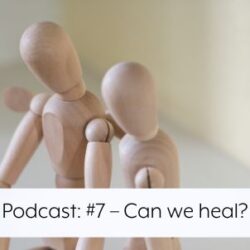
‘Child grooming’ refers to a series of actions deliberately undertaken in order to develop an emotional bond with a child in order to sexually abuse them. Grooming increases the availability of the victim for abuse whilst decreasing the likelihood of detection for the abuser. Many children do not realise that they have been groomed and have, in many cases, been manipulated into believing either that they have not been abused or that they were responsible for the abuse.
Grooming involves a ‘transfer of responsibility’ from the abuser to the victim so that the abuser overcomes their internal inhibitions around abusing, and the victim is shamed into remaining silent. Typically the offender moves to establish trust with their victim before isolating them and then controlling them. Offenders can go to extraordinary lengths to groom a child, showing a great deal of patience and being prepared to invest months and even years into the process. Offenders have a vested interest in appearing ‘normal’ and as regular, caring, honourable members of society. As Ray Wyre says, ‘Monsters don’t get close to children, nice men do.’
Offenders are devious, predatory, manipulative, controlling and methodical, but they work hard to appear helpful, generous, charming, sympathetic, affectionate, attentive and child-oriented. The grooming process is one of trickery and deceit and is extremely subtle. It is not surprising therefore that most children and adults are very rarely aware of the hidden motives behind the process, which is a form of manipulation or emotional seduction.
Offenders do not just groom the victim, but they also groom the family and the surrounding society, convincing everyone that they are good and that their motives are pure. They build entire careers in order to gain access to children, presenting a ‘pillar-of-the-community’ front whilst abusing children in the background. It is the highest form of deception.
The ten steps of grooming
1. Target area
The offender identifies a social group or setting in which access to children is viable, such as places where children hang out (schools, playground, online); businesses, charities or organisations which cater to children (churches, nurseries, Scouts/Guides, etc.); or specific families (especially single-parent families).
2. Select victim
Offenders particularly target children with obvious vulnerabilities: children who are unloved, unpopular, with family problems, who spend a lot of time alone or unsupervised, who lack confidence and self-esteem, have physical or intellectual disabilities, and are isolated from peers etc.
3. Recruit victim
A relationship is built with the victim based on emotional seduction. The offender offers ‘goodies’, such as toys, food, treats, outings; pays special attention; shows understanding and offers a listening ear; and finds and fills a void in the child’s life.
4. Introduce secrecy, including forbidden activities
A trap is laid for the victim, manoeuvring so that the abuser has power over them due to compromising information which the victim’s parent may disapprove of, for example drinking alcohol, smoking cigarettes, junk foods, late bedtimes, illicit material (e.g. overage films or video games) etc.
5. Test the victim’s ability to keep secrets
With the relatively innocuous secrets and forbidden activities introduced at the prior stage, the abuser tests the victim to see if they ‘tell’ or if their manipulation has been successful.
6. Isolate and alienate the child from family or friends
This can take place for example due to racial barriers (white parents disapproving of an Asian ‘boyfriend’), or by manipulating normal teenage rebellion and individuation, to create a sense that the abuser is their only ‘real’ friend, the only person that really loves them and cares for them. This increases the victim’s dependence on the offender and reduces the chance of them disclosing, by distancing them from appropriate sources of support and protection.
7. Introduce ‘harmless’ physical contact
An accidental brush of the shoulder, a hug offered as comfort, etc., introduces a low level of physical contact to break down the victim’s defences and increases the child’s acceptance of touch by desensitising them to it and breaking down their inhibitions.
8. Introduce overt sexual touching and abuse
The victim may be manipulated into engaging in sexual acts which are beyond their understanding, or the offender may feel secure enough to progress to overt abuse quickly.
9. Control
Using manipulation, threats and emotional blackmail, the offender ensures that the child remains available for abuse and reduces the risk of detection. For example, the offender makes direct threats (‘If you tell anyone, I will kill you’), uses emotional seduction (‘This is how we show our love for each other’) or emotional blackmail (‘If you tell anyone, I might go to prison and I would kill myself.’) The victim is effectively silenced and remains available for further abuse due to their dependence on the offender. Alternating abuse with affection, the attachment bond between victim and offender is strengthened and the victim is trapped.
10. Repeat assaults
The victim continues to be abused, often with increasing levels of offending. The abuse remains secret as the abuser reinforces silence and compliance through further coercion, threats or manipulation.
Tricks abusers use to maintain the secrecy of abuse
The Consequences Trick
‘You will get in trouble. I will get in trouble. You will end up in care. I will end up in prison. It will kill your mother.’
The Flattery Trick
‘This is our little secret. You’re so special. You’re so pretty. I love you so much.’
The Shame Trick
‘You’re so naughty doing this. You made me do this. You came back. You were smiling—you like doing this. You took my money for this. You enjoyed it—you had an orgasm/erection.
The Emotional Blackmail Trick
‘I will be so angry with you. I won’t love you anymore. No one will love you anymore. How could you do that to me after all I’ve done for you and given to you?’
The Entrapment Trick
‘I will have to tell your parents what you’ve done / about your drinking / about your smoking /drug-taking. You will get into trouble. I will post pictures about you on the internet. Everyone will know what a whore you are.’
Consequences for the adult survivor of child sexual abuse
Not all sexual abuse involves stereotypical grooming, but all abuse does involve a transfer of responsibility from offender to victim and seeks to increase the availability of the victim for abuse whilst reducing the risk of detection. Most typically, this results in the adult survivor feeling responsible for the abuse, keeping silent about it for many years, and struggling to unpick the tangle of feelings associated with it, such as the intertwining of pleasure (the emotional pleasure of the relationship; sexual pleasure used by the offender to increase the sense of guilt and complicity) and pain.
Adult survivors may find it difficult to trust others in relationships, having been tricked and deceived so completely as children by the offender(s). They may struggle to have confidence in themselves, having taken on board the blame (in the transfer of responsibility) for the abuse. They may make generalised links between receiving good things (affection, attention, praise, treats) with bad things (the abuse that followed). They may struggle to contravene the injunction not to tell, and feel terrible guilt, and fear of reprisals, at disclosing their abuse, even decades later.


